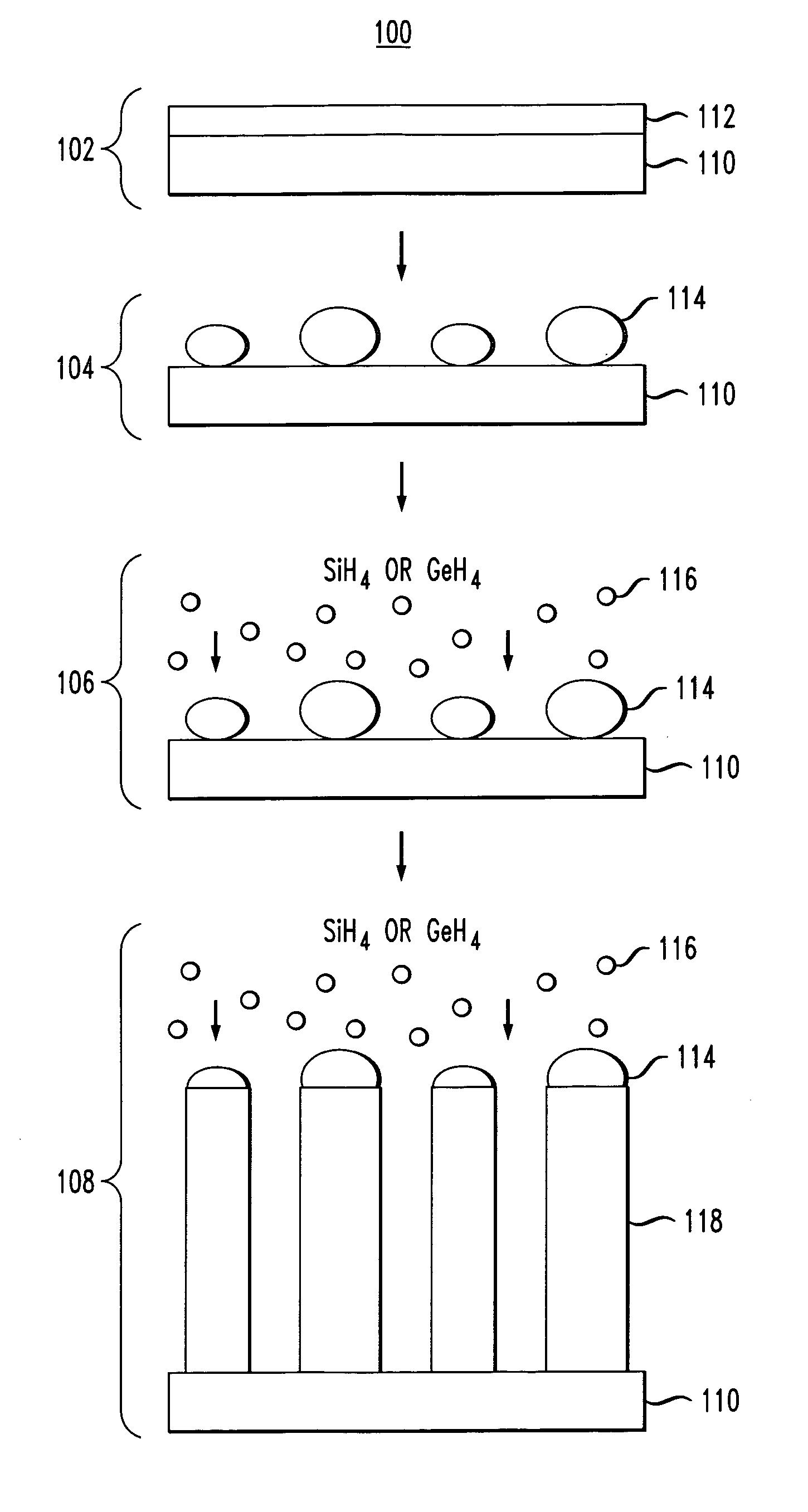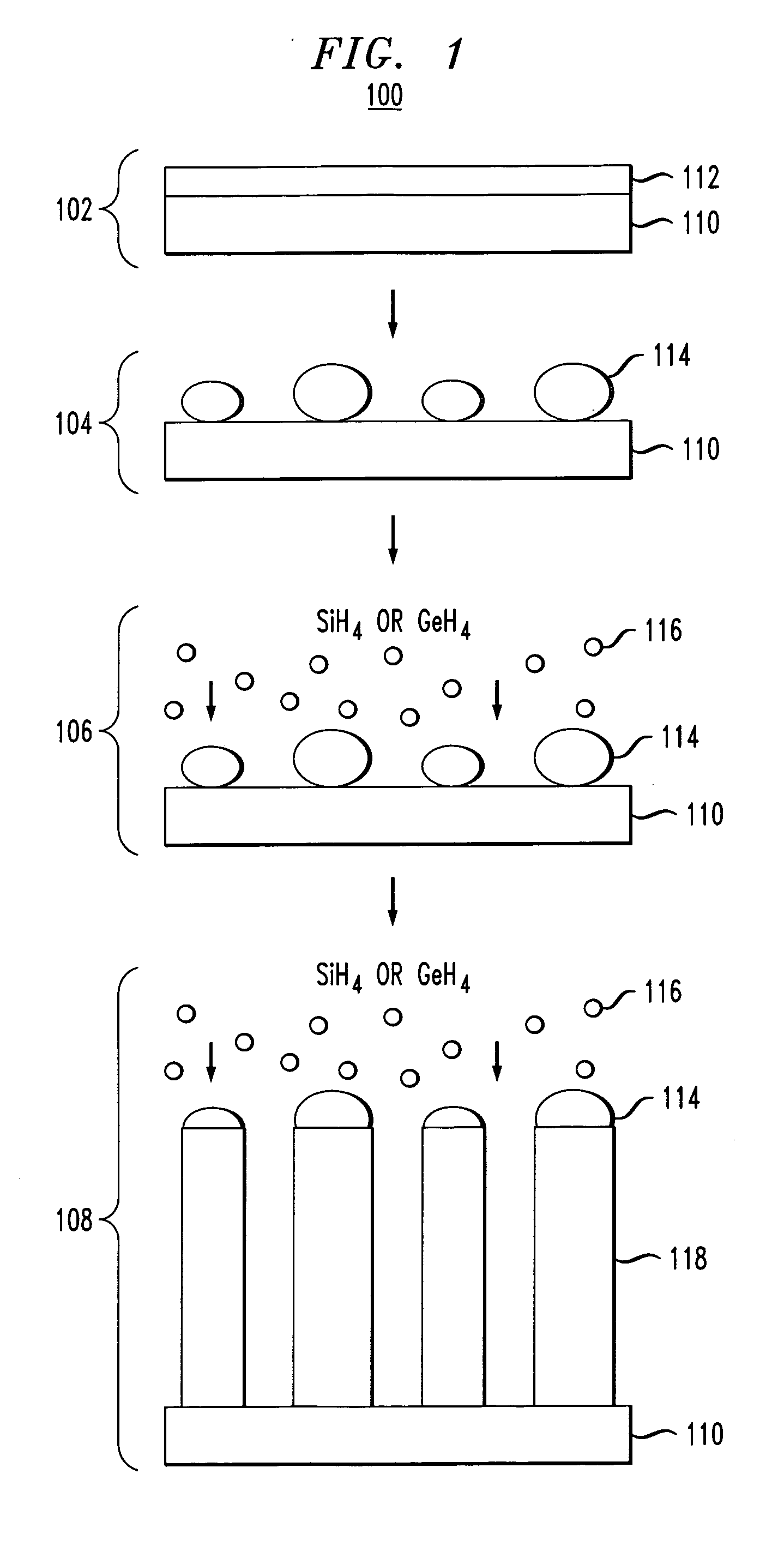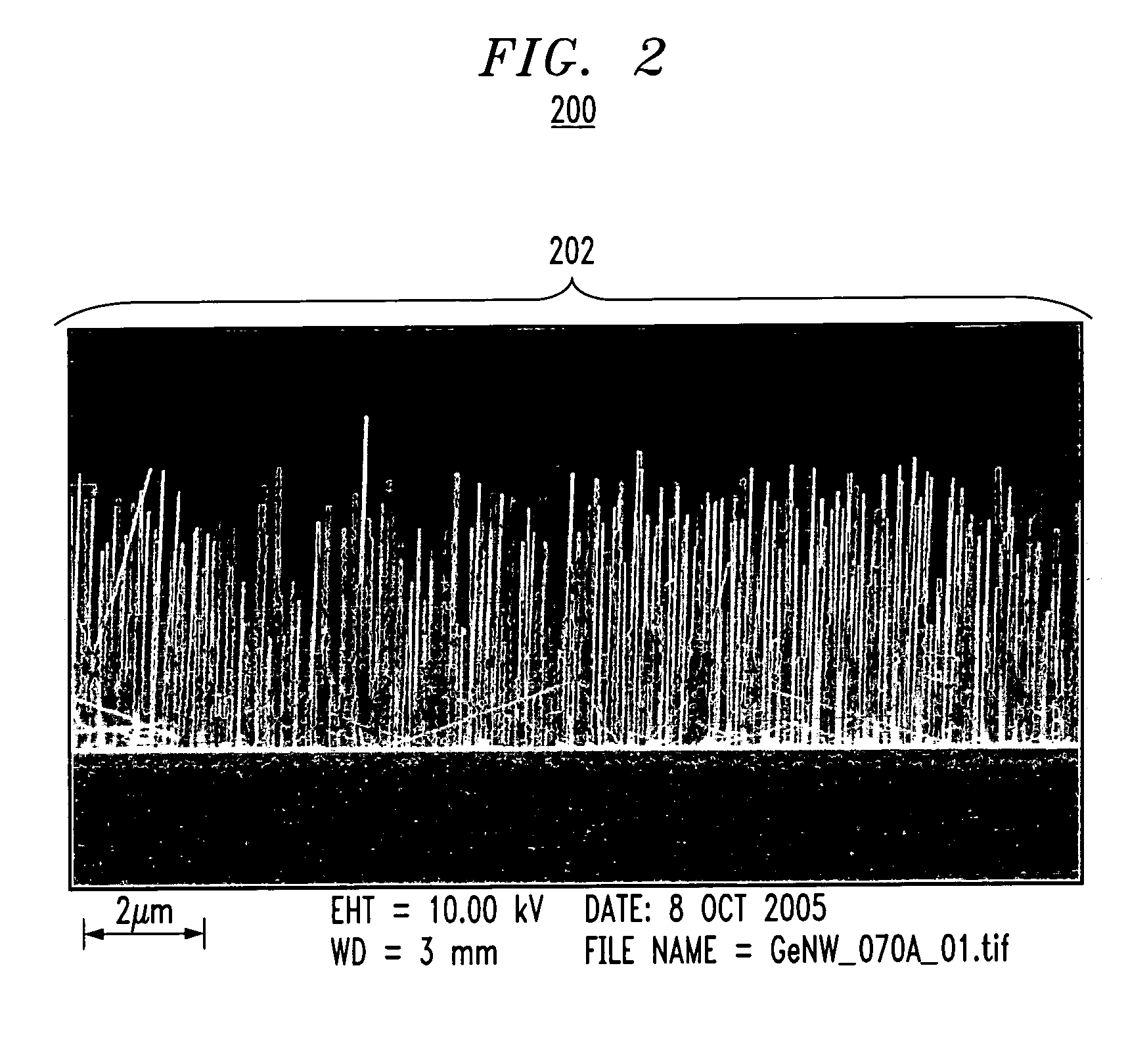Techniques for use of nanotechnology in photovoltaics
a nanotechnology and photovoltaic technology, applied in thermoelectric devices, basic electric elements, final product manufacturing, etc., can solve the problems of high cost of silicon crystalline semiconductor substrates, low conversion efficiency, and high cost of silicon photocell production
- Summary
- Abstract
- Description
- Claims
- Application Information
AI Technical Summary
Problems solved by technology
Method used
Image
Examples
Embodiment Construction
[0016]FIG. 1 is a diagram illustrating exemplary methodology 100 for growing a nanowire forest. The term “nanowire forest,” as used herein, refers to a plurality of nanowires attached to a substrate. As will be described in detail below, the growth of the nanowire forest is conducted in a chemical vapor environment.
[0017]Nanowires are highly-anisotropic, rod-like crystals with diameters d of between about ten nanometers (nm) and about 70 nm and lengths L of between about 0.1 micrometers (μm) and about 100 μm. Due to the nanowires having large L to d ratios, the surface area of the substrate is increased by a factor (4 L / d)f wherein f denotes the fraction of the substrate area covered by nanowires. By way of example only, for a five percent substrate areal coverage, nanowires of diameter d=40 nm and length L=five μm will provide a surface area that is 25 times greater than that of the substrate alone.
[0018]While the present description is directed to nanowires being a preferred nanos...
PUM
| Property | Measurement | Unit |
|---|---|---|
| temperature | aaaaa | aaaaa |
| temperature | aaaaa | aaaaa |
| diameters | aaaaa | aaaaa |
Abstract
Description
Claims
Application Information
 Login to View More
Login to View More - R&D
- Intellectual Property
- Life Sciences
- Materials
- Tech Scout
- Unparalleled Data Quality
- Higher Quality Content
- 60% Fewer Hallucinations
Browse by: Latest US Patents, China's latest patents, Technical Efficacy Thesaurus, Application Domain, Technology Topic, Popular Technical Reports.
© 2025 PatSnap. All rights reserved.Legal|Privacy policy|Modern Slavery Act Transparency Statement|Sitemap|About US| Contact US: help@patsnap.com



